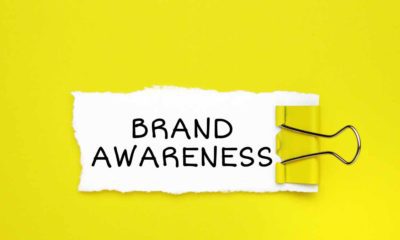Featured
What is A/B Testing in Marketing?
A/B testing is a popular and effective marketing technique used by businesses to measure the effectiveness of different marketing strategies. It involves comparing two versions of a marketing element such as an email, landing page, or advertisement to determine which one performs better. In this article, we will dive into what A/B testing is, why it is important, and how to conduct successful A/B tests.
What is A/B Testing?
A/B testing, also known as split testing, is the process of comparing two versions of a marketing element to determine which one performs better. The element you test could be a website landing page, an email, a banner ad, or any other marketing asset.
By creating two versions of the same element and testing them with a small sample of users, businesses can determine which version is more effective in achieving their marketing goals.
Why is A/B Testing Important?
A/B testing is important for several reasons. First, it helps businesses make data-driven decisions about their marketing strategies. Instead of relying on assumptions or intuition, A/B testing provides concrete evidence of which marketing tactics are working and which are not.
Second, A/B testing helps businesses optimize their marketing efforts by identifying the most effective elements of their campaigns. By continually testing and refining their marketing strategies, businesses can improve their conversion rates and ultimately increase revenue.
[Read More] CRO Marketing 101: A Beginner’s Guide to Improving Conversion Rates
How to Conduct a Successful A/B Test
- Identify the element to be tested: The first step in conducting an A/B test is to identify the element you want to test. This could be a website landing page, an email, a banner ad, or any other marketing asset.
- Define your hypothesis: Once you have identified the element to be tested, you need to define your hypothesis. This is a statement that outlines what you expect to happen as a result of the test.
- Create two versions of the element: Next, you need to create two versions of the element you want to test. These versions should be identical except for one key difference.
- Determine the sample size: Before you begin the test, you need to determine the sample size. This is the number of people who will be in the test.
- Run the test: Once you have determined the sample size, you can begin running the test. This involves showing one version of the element to one group of users and the other version to another group of users.
- Analyze the results: After the test is complete, you need to analyze the results. This involves comparing the conversion rates of the two versions of the element to determine which one performed better.
- Implement the winning version: Once you have determined which version of the element performed better, you can implement that version into your marketing strategy.
Best Practices for A/B Testing
- Only test one variable at a time: To ensure accurate results, it is important to only test one variable at a time. This means that the two versions of the element being tested should differ only in one key way.
- Use a large enough sample size: To ensure that the results of the test are statistically significant, it is important to use a large enough sample size. The sample size will vary depending on the element being tested and the expected conversion rate.
- Test consistently: To get the most accurate results, it is important to test consistently. This means testing at the same time of day, on the same days of the week, and with the same audience demographics.
[Read More] What Is Marketing Attribution? Your Must-Read Guide
Bottom Line
A/B testing is a powerful marketing tool that can help businesses improve their conversion rates and increase revenue. By testing and refining marketing strategies, businesses can optimize their campaigns for maximum effectiveness.
However, to conduct successful A/B tests, it is important to follow best practices and make data-driven decisions.
FAQs
What are some common elements marketers use in A/B marketing testing?
Common elements marketers use when A/B testing include website landing pages, email subject lines, ad copy, call-to-action buttons, and images.
How long should an A/B test run?
The length of an A/B test will depend on the element you’re testing and the size of the sample group. In general, an A/B test should run for at least a few days to ensure that the results are statistically significant.
What is statistical significance in A/B testing?
Statistical significance in A/B testing refers to the level of confidence that the results of the test are not due to chance. A statistically significant result means that the difference in conversion rates between the two versions of the elements you’re testing is likely to be real and not simply a result of random variation.
How often should I be A/B testing?
A/B testing is something you should do on a consistent basis. This ensures that marketing strategies are continually optimized for maximum effectiveness. However, the frequency of A/B testing will depend on the resources available and the size of the marketing team.
Can A/B testing work offline marketing campaigns?
Yes, A/B testing works for offline marketing campaigns. Such as print advertisements, direct mail campaigns, and in-store promotions. However, the logistics of testing may differ from online A/B testing and may require different tools and resources.
Josh Dylan is a California-based digital marketing and SEO expert. He grew up in Southern California before attending school nearby. Over his tenure in the marketing industry, J has led SEO-content strategy for multiple sites with millions of UVPM. In addition, J holds extensive experience in both in-house marketing teams and the agency side. With a specialty in search-engine optimization, and a strong knowledge of PPC/SEM, content, analytics, and more, J. Dylan is an all-around expert in all things digital marketing and regularly contributes to industry-leading platforms. As the owner of Something Incorporated (somethingincorporated.com), Josh continues to use his industry expertise to guide small and medium-sized businesses’ marketing strategies.











